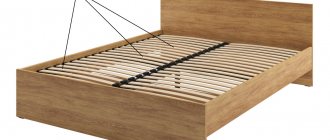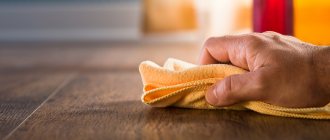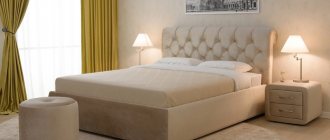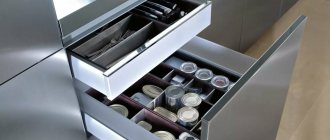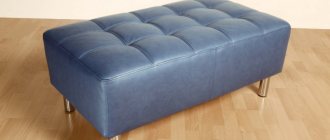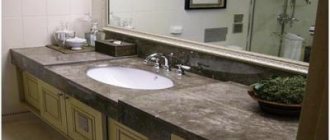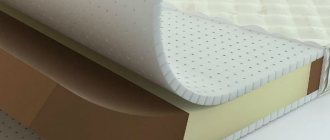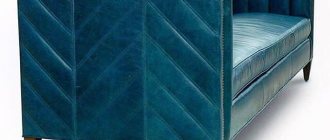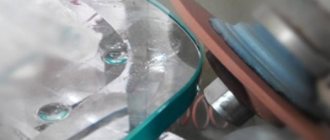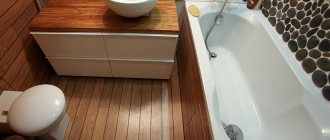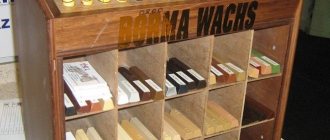Genuine leather is a flexible, durable, elastic material. Humanity has valued it for its high protective and aesthetic functions for many centuries: clothes, shoes, bags, even armor were made from it. It was the skin that served for the benefit of the development of civilization - the parchment from which the first books were made also consisted of this material.
Just like centuries ago, now genuine leather is an expensive pleasure. There is also an opinion that this material is inhumane and its use is unacceptable. That’s why they invented an economical, reliable and decent-looking artificial substitute - eco-leather.
History of eco
For a long time, technologists in chemical production have been looking for an analogue that can replace natural leather.
Made dermantin. But in terms of its characteristics, quality and properties, it was much inferior to the original. Because of this, consumers have a prejudiced attitude towards things made from synthetics. The picture changed after 1963. At this time, a wave of outrage from people to protect animals swept across America. We had to urgently find a way to produce synthetic matter. A year later, the baton was picked up in Japan. So gradually the new technology was introduced into plants and factories around the world.
What does eco-leather mean: its advantages and disadvantages
In the process of manufacturing the new material, polyethylene film was used, which was applied to a cotton or polyester base. Performance qualities depend on the thickness of the layer; the thicker it is, the more rigid the fabric itself becomes. In addition, using a hot press, a pattern is applied to the front side, which is not much different from a natural sample.
Main advantages:
- Environmentally friendly. Does not poison the environment with chemicals.
- Perfectly imitates a leather surface.
- High air permeability. The microporous structure allows you to “breathe” without letting water through.
- Good performance. Not subject to abrasion, creases and tears.
- Hypoallergenic. Does not cause redness of the skin in humans.
- Low cost.
- Easy to care for. There is no need to purchase special preparations to remove contaminants.
- Withstands large temperature changes: in severe frost it does not heat up, and in the heat it does not melt.
- Available for sewing at home.
- Various designs of the canvas are possible, that is, you can paint it in any color and create a different texture.
Disadvantages include:
- Cannot be repaired. You will not be able to restore damaged areas (cuts and scratches) using “liquid” glue.
So what should you choose?
The answer to the question of which material to choose for upholstering a sofa depends on your personal preferences and the future arrangement of the furniture.
So, for places with high traffic (office reception, employee lounge) or management office, it is preferable to choose models upholstered in eco-leather that is solid in appearance, practical and easy to care for.
In the kitchen or children's room it is better to place a sofa upholstered in eco-leather or textiles with dirt- and water-repellent properties. And if pets live in the house, give preference to upholstery with anti-claw properties (flock).
Don’t be afraid to experiment: a textile sofa can organically fit into a modern meeting room, and furniture made to look like leather will add variety to the living room interior without turning it into an office.
Difference from natural material
Eco-leather is an excellent substitute for natural raw materials and has the same properties and qualities. It is just as soft, elastic, environmentally friendly and easy to process and care for.
But they still have distinctive features:
- Synthetic – not capable of causing allergic reactions, like some types of genuine animal skins.
- Air permeability also varies.
- The organoleptic properties (feeling of pleasantness) and thermal conductivity of eco are slightly higher than those of the alternative sample.
How to distinguish from a synthetic substitute
We have outlined several ways:
- Place the first fabric sample on your hand and cover it with your other palm. You should feel a gentle touch. Dermantin does not give a feeling of softness and warmth.
- Apply vegetable oil to both options and leave in this position for about a day. If you see a dent in this place, then this is leatherette. This happens due to the destruction of the film plasticizer under the influence of fat.
You should know that modern technology allows you to create a natural pattern and spray tanning dust onto the reverse side of the canvas. Therefore, unscrupulous sellers will assure you of the authenticity of the product so that you buy something made from synthetics. Do not become a victim of deception, but use our recommendations.
Areas of use
Matter is successfully used in various spheres of the national economy. However, it has gained great popularity in the clothing industry: clothing, shoes, haberdashery, interior decor, furniture coverings, car covers.
Bags
High-quality artificial leather, comparable in its characteristics to genuine leather, is perfect for making any travel accessories. It is used to make suitcases, backpacks, briefcases, business card holders, clutches, handbags, cases for gadgets and passports, document folders, and wallets.
These items are difficult to distinguish from natural fabric, as they have the same advantages. Polypropylene does not emit hazardous chemicals and is anti-allergenic. The structure of eco-leather is characterized by high breathability properties, so it does not create a greenhouse effect. Very pleasant when in contact with the body. Bags made of genuine leather with elements of eco-friendly inserts do not overheat when exposed to ultraviolet radiation and do not harden at sub-zero temperatures.
When choosing a model, focus on appearance, material, fittings and price/quality ratio. Travel accessories from Italian ]Piquadro[/anchor] have excellent characteristics. Products can be selected based on your financial capabilities. The designers tried to provide collections in budget and premium class. Their bags are suitable for everyday use, as well as for work and travel.
Car covers
Since synthesized fabric has only recently begun to be produced, many vehicle owners do not yet know all the benefits of seat covers made of eco-leather.
The advantages include:
- When sewn correctly, it fits the seat without folds or bends.
- Pleasant to the touch.
- Antiallergen.
- Water repellent.
- Does not emit foreign odors.
- Has a cheap price.
- Compatible with other materials (when finishing covers).
- Simple and easy cleaning by wiping with a damp cloth. Traces from writing objects can be easily removed with chemicals.
- Withstands low temperatures up to 35 degrees.
A little about the disadvantages:
- Short service life (covers will have to be replaced after 2-3 years).
- So far, production has not been established for all car models.
- In winter, you need to spend a little more time on heating.
- The inside of the car gets very hot from the sun's rays.
- When buying, you can run into a “fake”.
Eco-leather for a baby stroller: what kind of leather is it?
We described above all the positive characteristics of the fabric. It is clear from them that a travel accessory for a baby will be reliable, warm and cozy.
Use our tips:
- During the winter season, place a small warm mattress on the bottom.
- Handle the product with care. Avoid scratches and cuts that active children aged two to three years can make.
- Choose options with a folding or detachable top and a ventilation function to avoid stuffiness inside the stroller.
- When purchasing, analyze the time of use (summer or winter), and up to what age you will ride the child.
Upholstery
The market offers sofas, armchairs, couches, beds made from various types of eco-leather:
- Oregon. The fabric consists of 70 percent cotton. Has high wear characteristics. Accurately conveys the natural pattern of natural leather. It has the best quality/price ratio.
- Alba. Also resistant to minor damage and exposure to sunlight. Not afraid of serious temperature changes. Excellent air permeability and repels water.
- Companion. It differs from previous samples in that it is more wear-resistant and durable, because excellent technology was used in production: a polyurethane film is applied to foam with a backing made of fleecy material.
- Dollar. The most expensive option and contains the best qualities of all previously taken samples together. Imitates the exact pattern of natural raw materials and is available in a wide range of colors.
Cloth
There is always a place for a jacket or raincoat in the wardrobe of every woman and every man. In addition, the originals acquire skirts, overalls and trousers of various colors. After all, the material is not afraid of experiments in processing, cutting and sewing. Therefore, things with different styles are still relevant in fashion.
Let's look at an example with jackets:
- “Leather jacket” (rocker style), made with an asymmetrical metal zipper and various iron alloy inserts.
- The shortened “Pilot” model came into fashion from aviation. Features a fur turn-down collar, patch pockets and elastic bands at the cuffs and hem.
- Fitted jacket.
- The motorcycle version is designed with protection elements in areas where there is a risk of injury.
- Winter and demi-season jackets are equipped, depending on the type, with insulation, fur elements and hoods.
Shoes
Since artificial fabric has recently appeared in the shoe industry, the consumer should know all the positive and negative characteristics.
Pros:
- Low price.
- Keeps the shape of the leg, does not stretch too much.
- Environmentally friendly and hypoallergenic.
- Air masses pass through.
- Durable.
- Available in any original colors.
Minuses:
- After the first wear, an unpleasant odor may form.
- In cold weather they are not very warm.
- Without prior application, creams can leak moisture and quickly lose their attractive appearance.
- Look at the manufacturer, as some of them use cheaper and low-quality raw materials, which leads to a short service life.
The best eco-leather brands
When thinking about how long eco-leather will last as seat upholstery and car interior, pay attention to proven brands of this material:
- Hortica. It has a “natural face” and even surpasses natural material in properties. Pleasant to the touch, durable, light-resistant, with high air exchange. Resistant to abrasion, mechanical stress, including scratches, snags, and deformations. It can be smooth or perforated.
- MARS. Wear-resistant, tear-resistant. It is characterized by high vapor and air permeability, light and frost resistance. The basis of the canvas is microfiber. The coating can be structured, smooth or perforated.
- Boston. Comfortable, strong, soft, moisture- and light-resistant. Has classic embossing of genuine leather. Very elastic and tactilely pleasant.
- Dollaro. Characterized by increased resistance to deformation, tearing, and abrasion. Serves for at least 5 years on car seats.
Eco-leather of these brands will last from 4 to 10 years or more. Any type of material is suitable for upholstery of interiors and seats: self-adhesive, stretch, quilted eco-leather, smooth or perforated nappa. The optimal base is microfiber, since it is the most wear-resistant. The more competently a material is cared for, the longer it will retain its appearance and characteristics, even with intensive use.
READ MORE: Coffee maker REDMOND RCM-1511: characteristics, description, instructions | Redmond official website
Kinds
Until recently, PVC film was used in production. Now it has been replaced with a more modern chemical polyurethane. Depending on the processing methods, imitation genuine leather is produced in several versions.
Microfiber
This is a fabric made from genuine or synthetic ultra-fine fibers, several micrometers thick. It may contain different elements: microfleece, cellulose, cotton and polymers (polyester, polyamide, polyester). Depending on the manufacturing methods and constituent components, the resulting fabric is used for sewing medical and construction clothing, blankets, bed linen, shoes, towels, tights, and surface cleaning wipes.
P.U.
This badge is given to products made from split wood. It is made of genuine leather, divided into several layers. The internal layers are glued together and covered with polyurethane. Only the front part undergoes dyeing and decoration with a pattern identical to natural raw materials. Products made from PU have the same qualities as leather.
Perforated
This type is represented by a canvas with obvious multiple small holes. It is mainly used to sew decorative elements for automotive equipment (covers) and haberdashery accessories. They also cover the interior of the car. It allows air to pass through perfectly.
Self-adhesive
The adhesive-based material is a real breakthrough in the chemical industry. It is used in places where it is not possible to use glue. It fits perfectly without creases or bends on parts with roundness and bulges. For example, for cars it is used to reupholster both the interior and the steering wheel, dashboard, ceiling and doors.
PVC
Artificial fabric of mixed composition is also called polyvinyl chloride, fabric for awnings or banners, PVC. It has found wide application in all sectors of the national economy and industry.
Produced by covering a PVC base consisting of a mixture of fibers of different polymers: nylon, lavsan, polyester. To impart elasticity and durability, varnish and chemical additives are used.
Main advantages:
- High resistance to fire and oil products.
- Has excellent density.
- Does not allow air or moisture to pass through.
- Withstands strong temperature changes.
- Does not oxidize.
- Does not deform under direct sunlight.
- Long service life from five to fifteen years.
- Low cost.
Stretch
A very popular material is used for the production of any clothing, shoes, and haberdashery. It can act as an independent element or as an additional design decor.
Contrary to popular belief that genuine stretch leather does not exist, technologists have managed to create a unique fabric where the front side consists of natural raw materials, and the back side is made of a textile base. For this purpose, thin sheepskin is tanned and combined with cotton during the manufacturing process.
Properties of leatherette
There are several types of leatherette. They have some differences in manufacturing technology, but the basis is the same for all. In industrial terms, leatherette, or artificial leather, is PVC sheets reinforced with fabric. That is, the basis of the material is the substance polyvinyl chloride. During operation, it may release toxic substances. This happens especially strongly when exposed to sunlight or at high temperatures.
The main differences between eco-leather and leatherette:
- leatherette does not allow air to pass through, so a person sweats in such clothes and shoes;
- At low temperatures, PVC becomes rougher and cracks appear;
- faux leather feels rougher to the touch than eco-leather.
The two materials are similar only in two respects: they do not allow moisture to pass through and they look like genuine leather.
Leatherette is the very first attempt by scientists to create a material similar to natural leather, but at a lower price. Currently it is rarely used. Typically, PVC-based artificial leather is found in cheap, low-quality products. All major manufacturers today use eco-leather.
Rules of care
You should know that it is strictly forbidden to wash eco-leather fabric!
For cleaning, use our tips:
- Remove dust from the sofa with a dry cloth.
- Traces from writing objects are wiped off with plain water and laundry soap.
- Oily stains can be easily removed using a special preparation for natural leather or a solution of ammonia and water in a 1 to 1 ratio.
- Remove rain moisture from the surface in a timely manner.
- Do not use bleaches or cleansers (with abrasive particles).
- To extend service life, use water-repellent agents.
Eco leather bags
Looking at bags in store windows, it’s hard not to notice how popular eco-leather has become, but not everyone knows what kind of material it is. For the manufacture of bags, characteristics such as strength, water resistance, and resistance to mechanical stress are important, while breathability takes a back seat. A convenient and practical option is a stylish and roomy backpack made of eco-leather, an ideal everyday option for walks or trips.
In which store can I buy ECO?
You have two options. Purchase at various retail outlets where the material is sold, or search on the Internet. There you will definitely choose the option you need from a large assortment. Many sites provide samples with photographs, descriptions and prices.
Based on your own preferences and price category, you should independently make a choice in favor of products made from cheap artificial fabric or from more expensive but high-quality calfskin, for example, travel accessories from the Italian ]Piquadro[/anchor].
In this article, we discussed everything about eco-material, told what it is, whether it is genuine leather or not, what its composition is, and how eco-leather is used on bags.
Manufacturing Features
There are several types of eco-leather for making furniture. These names are often used to describe certain synthetic leather products, such as eco-leather for furniture, leatherette (car upholstery, clothing) and consumer goods. There are two main types of faux leather construction: polyurethane ("PU") and polyvinyl chloride (PVC - "Vinyl"). Before choosing eco-leather for a sofa, it is worth exploring the available options.
Both polyurethane and vinyl are used in clothing, eco-leather for furniture and coatings for products, but each is better suited for certain applications than the other.

